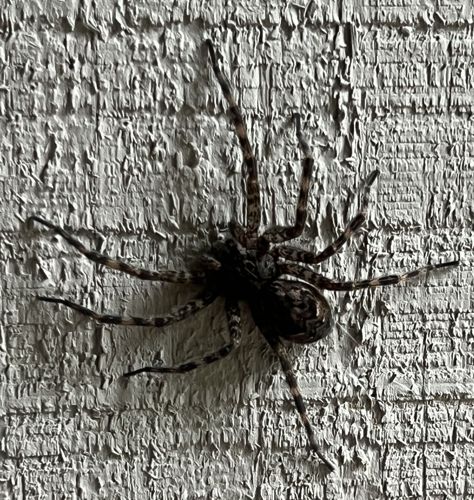Wolf Spider
Scientific Name: Lycosidae (a family of spiders, specific genus/species would require closer identification)
Order & Family: Order: Araneae, Family: Lycosidae
Size: Wolf spider sizes vary greatly depending on the species, ranging from about 0.5 cm (0.2 inches) to 3.5 cm (1.4 inches) in body length, with leg spans often exceeding this. Females are typically larger than males.

Natural Habitat
Wolf spiders are found in a wide variety of habitats, including grasslands, forests, deserts, suburban gardens, and even inside homes. They prefer to live on the ground, often under rocks, logs, leaf litter, or in burrows they dig themselves or take over from other creatures.
Diet & Feeding
Wolf spiders are carnivorous predators, primarily feeding on insects such as crickets, grasshoppers, flies, beetles, and other small invertebrates. They may also consume other spiders.
Behavior Patterns
Wolf spiders are solitary hunters that do not build webs to catch their prey. Instead, they actively pursue and pounce on insects and other small invertebrates. They are often seen crawling on the ground or darting from place to place. Females carry their egg sacs attached to their spinnerets and, once the spiderlings hatch, they often carry them on their backs for some time.
Risks & Benefits
Risks: While wolf spiders are not typically aggressive, they may bite if they feel threatened or are mishandled. Their bites are generally not medically significant for humans, usually causing only localized pain, redness, and swelling, similar to a bee sting. Allergic reactions are rare. Benefits: They are beneficial predators in ecosystems, helping to control populations of various insect pests, which can be valuable in gardens and agricultural areas.
Identified on: 8/27/2025